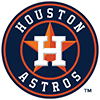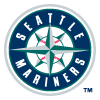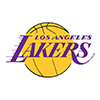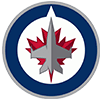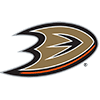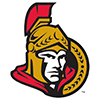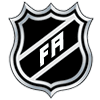For the first time in the past several years, there will be no drama at the top of the NHL draft this summer. But after Connor McDavid and Jack Eichel are selected, nobody really has any idea what will happen next. The Edmonton Oilers (who else?) will make the first overall selection on June 26 in Sunrise, Florida. Our annual top-30 ranked players are listed below.
1. Connor McDavid (C, Erie-OHL): This blurb is about McDavid as a player, not his fit on the Oilers. That will come in our Draft Review piece. Talent wise, McDavid is the best prospect I've seen since I started doing this. He has more ability to make plays with the puck on his stick than any player I've seen at his age. I also think he's a better skater than Sidney Crosby was in his draft year. When you combine his hands, skating ability and his willingness to go to the difficult areas of the ice to make plays, there's no prospect that can match his natural ability. I'm hesitant to say any 18-year-old has Hall-of-Fame ability because there are just too many unknown variables (aging, injuries, teammates, coaches, etc.), but if any kid can pull it off, it's McDavid. There have been first overall picks in every major sport that have failed miserably. It's happened before and it'll happen again. That being said, I'd be shocked if McDavid is one of them. He just has too many skills not to succeed, and I
For the first time in the past several years, there will be no drama at the top of the NHL draft this summer. But after Connor McDavid and Jack Eichel are selected, nobody really has any idea what will happen next. The Edmonton Oilers (who else?) will make the first overall selection on June 26 in Sunrise, Florida. Our annual top-30 ranked players are listed below.
1. Connor McDavid (C, Erie-OHL): This blurb is about McDavid as a player, not his fit on the Oilers. That will come in our Draft Review piece. Talent wise, McDavid is the best prospect I've seen since I started doing this. He has more ability to make plays with the puck on his stick than any player I've seen at his age. I also think he's a better skater than Sidney Crosby was in his draft year. When you combine his hands, skating ability and his willingness to go to the difficult areas of the ice to make plays, there's no prospect that can match his natural ability. I'm hesitant to say any 18-year-old has Hall-of-Fame ability because there are just too many unknown variables (aging, injuries, teammates, coaches, etc.), but if any kid can pull it off, it's McDavid. There have been first overall picks in every major sport that have failed miserably. It's happened before and it'll happen again. That being said, I'd be shocked if McDavid is one of them. He just has too many skills not to succeed, and I expect him to be one of the best players in the NHL sooner rather than later.
2. Jack Eichel (C, Boston University-NCAA): Eichel is going to be the second pick, but he's still a stud. I have him ranked higher coming into the draft than any of the previous five No. 1 overall picks (Aaron Ekblad, Nathan MacKinnon, Nail Yakupov, Ryan Nugent-Hopkins, Taylor Hall). Other than McDavid, I think he's the best prospect available since John Tavares and Victor Hedman were taken back in 2009. Eichel won the Hobey Baker Award in his freshman season at Boston University after posting 26 goals and 71 points in just 40 games. I think he looks like Ryan Getzlaf and Corey Perry; big, strong, heavy right-handed shot. And while not an elite skater like McDavid, his skating is more than good enough.
3. Mitch Marner (RW, London-OHL): There's no clear consensus among scouts about who is the third-best prospect in the draft. I think it is Marner because I believe he has the most dynamic skill set after the top two. He's not in the class of McDavid or Eichel, but I think he has the offensive ability to be a perennial All-Star in the NHL. Marner's height isn't really an issue (he's about 5-foot-11), but he's going to need to put on another 10-to-20 pounds of muscle to be successful in the NHL. He's currently listed at 165 pounds and I don't think he is ready to play in the NHL next season. He needs another season in juniors. But there just aren't many players who come along who can combine Marner's skill level and his ability to play in traffic, despite his small stature.
4. Noah Hanifin (D, Boston College-NCAA): Hanifin has it all. Size (6-foot-2, 205 pounds), skating ability, offensive skills, and smarts. He was one of Team USA's best defensemen at the World Juniors as a 17-year-old, and he got better for Boston College as the season went on. I'm not convinced Hanifin will ever be an elite point producer at the NHL level, but I expect him to be a 25-minute-per-game guy. He may not be prototypical quarterback, but he should be able to do damage with the man advantage and make plays in all situations. Because he's so physically mature, it's possible he could be ready for NHL duty after just one more season in college. I don't think he'll ever be a franchise defenseman such as Hedman, Drew Doughty, or Duncan Keith, but I definitely think he has the potential to be on a top pairing. I think he's clearly the best defenseman in the draft.
5. Dylan Strome (C, Erie-OHL): The Otters figure to be responsible for 40 percent of the top-five selections in the draft. Strome is a different type of player than McDavid. He's bigger (6-foot-3, 190 pounds), but a weaker skater. His skating isn't terrible, but it will never be an asset at the NHL level. Strome's biggest assets are his hockey IQ, passing ability, and cannon of a shot. He plays a similar game to his brother, Ryan Strome, who is a forward for the Islanders. Although Ryan is a better skater, Dylan is much bigger. There are plenty of scouts who have him rated ahead of Marner, and I'd be surprised if he fell out of the top five.
6. Zachary Werenski (D, University of Michigan-NCAA): Werenski was the best defenseman all season long as a 17-year-old for one of the most storied programs in college hockey. He also played well for Team USA at the World Juniors (a tournament that is notoriously difficult on draft-eligible players). The biggest knock on Werenski is that he doesn't use his size (6-foot-2, 215 pounds) to his advantage as often as he could, but that can be taught. A terrific skater, Werenski may have the best puck skills of any of the top defensemen available in the draft. It's a bit of a surprise that he's not being talked about more leading up to the draft. There just aren't a lot of defensemen who can play the two-way game as well as Werenski can at such a young age.
7. Mathew Barzal (C, Seattle-WHL): If it wasn't for a knee injury that cost Barzal nearly half his season, I think he would have been in the conversation to be a top-five pick. He definitely needs to get bigger and stronger, but he has a good frame and he's a terrific skater. He reminds me of Sam Reinhart in the sense that he gets more out of his physical tools than he should because he's such a smart player. Barzal always knows where to be on the ice, and it leads to him frequently setting up his teammates. He'll always be known for his playmaking ability more than his goal scoring. Right-handed shooting center ice men who have elite vision are in high demand at the moment (and rightfully so).
8. Ivan Provorov (D, Brandon-WHL): Despite Provorov putting up a ton of points this year for Brandon (61 in 60 games), most scouts think that was more a product of playing for one of the best teams in the CHL as opposed to what he will be able to do in the future. Provorov is smart, a terrific passer, and is physical enough when he has to be. He didn't look out of place in the World Juniors despite the fact he was one of the younger players in the tournament, and the fact he was willing to come over from Russia to play junior hockey should definitely improve his chances of being a high draft pick. I don't see Provorov as a high-end offensive producer at the NHL level, but more of a solid two-way guy on a second pairing who can help on the power play. He's definitely an intriguing prospect, but I'd certainly prefer Hanifin or Werenski.
9. Timo Meier (RW, Halifax-QMJHL): There was talk last year that Nikolaj Ehlers put up dominant numbers for Halifax because he was playing alongside Jonathan Drouin. There's talk this year that Meier put up elite numbers because he was playing alongside Ehlers. I wasn't buying it regarding Ehlers, and I'm not buying it regarding Meier. Meier isn't particularly tall (6-foot-1), but he's very thick (210 pounds) and difficult to knock off the puck and he has an NHL-caliber shot. You don't score 44 goals as Meier did this past season without some ability -- I don't care who you're playing with. Ehlers is going to find himself in the NHL next season, and I fully expect Meier to return to Halifax and have another monster year.
10. Mikko Rantanen (RW, TPS-Finland): Rantanen spent his year playing for two terrible teams (TPS and the Finnish World Junior team), but he earned praise from scouts for his solid showing at the World Juniors even though his team looked borderline dysfunctional. He will never be a great skater, but 6-foot-4, 210-pound power forwards who play very hard and have a booming shot don't grow on trees. I was very impressed with what I saw from Rantanen all season long, and I love him as a prospect. While I don't think his skating will keep him from excelling in the NHL, he could become a dominant force if he can improve it just slightly.
11. Pavel Zacha (C, Sarnia-OHL): Zacha played center for Sarnia this season when he managed to play (which wasn't often, appearing in only 37 games), but I'm firmly in the camp that thinks he's a future winger. He's not a particularly good playmaker, and I think his best chance for success in pro hockey is for him to move to the wing and use his size (6-foot-3, 215 pounds) and strength. I get wary when kids struggle to produce points in their draft year (Zacha had just 34 points in 37 games), but he missed a ton of time due to injuries. He was suspended twice for a total of eight games and he missed time while he was playing for the Czech Republic at the World Juniors. He has the tools to be a top-10 prospect, but I wouldn't be surprised if he never got his act together. He's a high-risk, high-reward option.
12. Kyle Connor (C, Youngstown-USHL): The vast majority of top American hockey prospects play for the U.S. National Development Program in Ann Arbor, Mich. before heading off to college. Connor has elected to spend the last three years in the USHL, which is notorious for being a low-scoring league. Connor has had 154 points in 112 games for Youngstown over the past two seasons. It's tough for kids to get noticed when they aren't playing in juniors or college, because scouts often tend to think that the production is the result of playing inferior competition. There's no indication that's the case with Connor. He's a wizard with the puck on the stick, and has the breakaway speed that is desired by every NHL organization. It would be a shock if Connor fell out of the top 15.
13. Nicholas Merkley (RW, Kelowna-WHL): Merkley is an interesting case. He isn't big (5-foot-10, 185 pounds), and he isn't a great skater. That's usually a bad combination, but his grit, smarts, and offensive ability make him a surefire first-round pick. He only scored 20 goals this past season for Kelowna, but he racked up a ridiculous 70 assists. Merkley was in the spotlight all season playing for the WHL champion Rockets, and except for a slight dip late in the season, he was productive all year long. There is no doubt there will be teams that are scared off by Merkley's size, but it's almost certain that some team will think enough of his offensive talents to make him a mid-first round pick.
14. Oliver Kylington (D, Farejestad-Sweden): No draft eligible player's stock has dropped more in the past 12 months than Kylington's. He went from being a consensus top-10 pick -- and possibly a top-5 pick -- to not even being a certainty for the first round. When I watch Kylington, I see a guy who plays a game awfully similar to Rangers defenseman Keith Yandle. He isn't particularly big (6-foot-0, 180 pounds), but Kylington gets back into his own zone quickly, makes a great outlet pass, and while he may not have a huge shot, his vision makes him a threat on the power play. Kylington also caught a bad break when he was forced to miss the World Juniors due to injury. He had a real tough season, but I'm still a believer.
15. Evgeni Svechnikov (RW, Cape Breton-QMJHL): Svechnikov's combination of size (6-foot-3, 205 pounds) and skill is going to make him a high pick. He scored 32 goals in his first QMJHL season, and he has all the skills necessary to be an extremely effective power forward at the NHL level. His skating has slowly improved, and he uses his size to his advantage. Out of the AK Bars Kazan program in Russia, Svechnikov was willing to leave his home country to play in a small market in Nova Scotia, which bodes well for his future. He seems to be less of a risk than most other 18-year-old Russian forwards.
16. Lawson Crouse (LW, Kingston-OHL): Let me get this out of the way: I'm not a fan of Crouse. To me, he looks like a smaller, less talented version of Canadiens forward prospect Michael McCarron. And even though McCarron looked considerably better in his second OHL season than his first, I wasn't on board with him being the 25th overall pick in the 2013 draft, and I'd be even more terrified that Crouse is expected to be a top-10 selection this year. Supporters of Crouse state pretty much what you'd expect: he's a threat because of his size (6-foot-4, 215 pounds), he does his best work along the wall, and he played well at the World Juniors as a 17-year-old. And while he certainly has ability and physical gifts, I'm just not seeing it to the extent that most scouts are. Crouse finished as the fourth-ranked North American skater by the ISS. Maybe I'm completely off base here, but I have Crouse ranked 16th, and there's another five or six guys I'd consider taking ahead of him, depending on the needs of my team. I'd be scared to death if Crouse was the first-round pick (likely top-10) of my favorite team.
17. Thomas Chabot (D, St. John-QMJHL): Chabot will always have a chance because of his skating ability. The rest of his game (decision making, offensive skills) have slowly come along over time. He looks like a slightly smaller version of Rangers 2012 first-round pick Brady Skjei, though Chabot may very well bring more to the table offensively. I think he's a safe pick. He's physical when he needs to be, and I trust in his ability to play big minutes. He has all the physical tools to be a very good second-pairing NHL defenseman who can chip in on the power play.
18. Daniel Sprong (RW, Charlottetown-QMJHL): A native of the Netherlands, Sprong has a load of offensive talent and average size (6-foot-0, 190 pounds), but he's not a physical player and he does the vast majority of his work on the outside. He had another productive season for Charlottetown (39 goals and 88 points in 68 games), but he's a risk. Sprong can be inconsistent, and scouts are worried that unless he's willing to become more engaged physically, he will struggle against bigger and stronger players in professional hockey. I wouldn't be completely shocked if he fell out of the first round.
19. Paul Bittner (LW, Portland-WHL): You don't want to label an 18-year-old kid lazy, but there's no consistency in Bittner's game, even on a shift-by-shift basis. When he's at his best, Bittner is a huge body (6-foot-4, 195 pounds) that skates well and has a hard and heavy shot. The problem is that you don't see any of it nearly enough. Bittner scored 33 goals for Portland this season, but he was playing with two of the most talented offensive players in all of junior hockey in Nicolas Petan and Oliver Bjorkstrand. Bittner will be a first rounder because of his skill set, but he really needs to bring it every night.
20. Travis Konecny (C, Ottawa-OHL): Two seasons ago when he entered the OHL, Konency was viewed as a possible top-5 pick. He hasn't played poorly, but he hasn't had that true breakout season, and others players seemed to have passed him by. The biggest concern about Konecny is that he plays too hard. It sounds funny, but a kid who is 5-foot-10, 170 pounds can't play like a guy who is 6-foot-5 and 220. Konecny has a lot of offensive ability and his coaches love him, but scouts think he will have to change his game to be successful in professional hockey. He also has a history of concussions, which is a major red flag in this day and age.
21. Jake DeBrusk (LW, Swift Current-WHL): I love DeBrusk. I think he's one of the more underrated players in the draft. He scored 42 goals this past season for Swift Current and the vast majority of them were because of sheer hard work. His hockey sense is off the charts, and though the size is just average (6-foot-0, 175 pounds), the smarts make up for it. I'm not sure his upside is gigantic, but I think at worst he will be a successful third liner who can help in all areas and score 15-to-20 goals per season.
22. Jakub Zboril (D, Saint John-QMJHL): Injuries limited Zboril to just 44 games with Saint John this past season. He also wasn't selected for the Czech national team at the World Juniors, so scouts didn't get to see as much of him as they hoped. When he did play, Zboril earned positive reviews. He plays a calm, smart game in his own zone, but he's also willing to step up and throw a big hit and defend his teammates when necessary. He scored 33 points in those 44 games, but I don't expect a ton of offense as a pro. I think Zboril is a safe pick. I don't think he'll be a star, but I'd be surprised if he didn't have a long NHL career.
23. Jeremy Bracco (RW, U.S. NTDP-USHL): Allow me to admit that I'm well aware that I likely have Bracco ranked considerably higher than everyone else. Somehow, Bracco, who was seen as a mid-first-round pick entering the season, set the all time U.S. NTDP assist record this past year (64), and his stocked actually dropped. The two main complaints from scouts about Bracco seem to be his size (he's generously listed at 5-foot-10, 175 pounds) and his individualist attitude. How a kid who set a program's assist record this past season can have an individualist's attitude is beyond me. A lot of these kids are used to playing an individual game because they've been the best players on their teams their entire lives. I expect Bracco to be a second-round pick, and as long as he can add 10-to-15 pounds of muscle, I think he has a chance to be a top-six center in the NHL because of his playmaking ability.
24. Ilya Samsonov (G, Magnitorgorsk-KHL): I'm not in love with the goaltending group in this draft class. I think Samsonov is clearly the No. 1 guy, and there's no one else even close. He's eerily similar to current Lightning goalie and fellow Russian Andrei Vasilevskiy. He's performed well for Russia on the international stage, and he's big (6-foot-3, 200 pounds) and very technical for such a young kid. Vasilevskiy was the 19th overall pick in the 2012 draft, and while I'd be surprised if Samsonov goes that high, he certainly would be worthy of a first-round pick. However, he could drop because teams are still concerned about getting young Russian players to come to North America.
25. Brandon Carlo (D, Tri-City-WHL): At 6-foot-5, 185 pounds, Carlo has the frame to become a shutdown defender at the NHL level. He was good for Team USA at the World Juniors as an 18-year-old, but he was inconsistent for Tri-City. Carlo skates fairly well and makes a good outlet pass, but I don't think he'll produce much, if any, offense when he turns pro. He has enough tools at his disposal that he should be ranked higher, and even if his doesn't develop more, Carlo should have a long career as a physical, third-pairing defenseman. If his offensive game comes, he has the potential to be a stud.
26. Jeremy Roy (D, Sherbrooke-QMJHL): Roy plays a quietly efficient game. He's not a pure offensive defenseman, and he's not a pure defensive defenseman. Roy projects as a player who will get a team 10-to-12 years of quiet, quality service. He'll probably never make an All-Star team, but he also projects as a guy who will be in the lineup every single night. Not particularly big (6-foot-0, 185 pounds), Roy makes up for it with his hockey IQ. He will also earn some extra points for being a right-handed shot. He'll make for a solid but not sexy pick late in the first round.
27. Zachary Senyshyn (RW, Sault Ste. Marie-OHL): Senyshyn had the poor luck of playing his draft year on a loaded team. He spent almost the entire season on either the third or fourth line, but he still managed 26 goals and 45 points in 66 games. The Greyhounds loaded up their team at the trade deadline in the hopes of winning an OHL Championship and that sealed Senyshyn's fate for the season. If he was on a bad team and got more playing time, I have no doubt that he would be a first-rounder. There's nothing to not like about Senyshyn's offensive game. He's big (6-foot-2, 195 pounds), skates well, and finishes well. Senyshyn isn't going to be a first-round pick (at least, I'd be surprised if he was), but he's one of my favorite players in the draft.
28. Colin White (C, U.S. NTDP-USHL): White is the kind of player who you may not want to spend a top-15 pick on, but he would be a great selection late in the first round. A smart, gritty, two-way center, White projects as an all-around third-line player at the NHL level. Playing on a loaded team in Ann Arbor, he didn't get as much playing time this season as some of the other more gifted offensive players. I always believe you should get as much skill as possible with your first-round pick, but White is a nice, safe option for teams picking at the end of Round 1.
29. Jansen Harkins (C, Prince George-WHL): Harkins had a fairly decent season (79 points in 70 games) on a bad Prince George team. Like virtually all prospects who are projected to be mid-to-late first-round picks, Harkins has both strengths and weaknesses. He's an extremely smart player with some offensive ability, but his skating isn't great and he's inconsistent. The second quality was probably influenced by playing on poor team and not having much help.
30. Brock Boeser (RW, Waterloo-USHL): Boeser had a big year for Waterloo (35 goals and 68 points in 57 games) in the low-scoring USHL. It was an impressive effort from a guy who was playing high school hockey in Minnesota last season. Boeser is a purely offensive player. He has a big shot, moves fairly well and can play a power game when necessary. Boeser has been getting some love lately as a potential top-15 pick. Committed to the University of North Dakota for next season, of all the players on this list, Boeser has the potential to make the biggest jump by this time next year if he carries his play over to college hockey.







